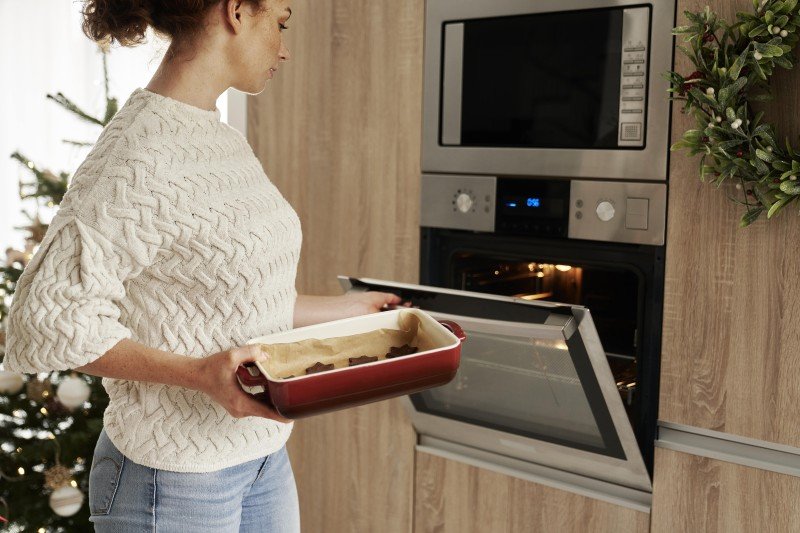Understanding Ovens and Hobs: A Comprehensive Guide
Cooking has come a long way since the days of open flames and basic cooking approaches. Today, ovens and hobs are at the heart of modern cooking areas, offering adaptability, performance, and a range of cooking alternatives. Whether you are a newbie cook or a seasoned chef, comprehending the distinctions, functions, and functions of these home appliances is crucial for making the most of culinary capacity. This post breaks down the numerous types of ovens and hobs available on the marketplace, their performances, and how to pick the ideal home appliances for your kitchen.
What is an Oven?
An oven is an enclosed area developed for heating and cooking food, offering various techniques such as baking, roasting, and broiling. Ovens come in different types, each serving distinct cooking preferences and requirements.
Types of Ovens
Traditional Ovens:
- Use gas or electrical power for heating.
- Typically consist of a heating aspect at the top and bottom.
- Perfect for standard baking jobs.
Convection Ovens:
- Use a fan to flow hot air, promoting even cooking.
- Ideal for baking, roasting, and reheating.
- Lowers cooking time and improves flavor.
Steam Ovens:
- Utilize steam to cook food while keeping wetness and nutrients.
- Exceptional for health-conscious cooking, such as vegetables and fish.
Microwave Ovens:
- Use electro-magnetic radiation to heat food rapidly.
- Best for reheating leftovers or cooking basic meals.
Wall Ovens:
- Built into the wall, conserving area in the kitchen.
- Readily available in numerous setups, including single or double ovens.
Key Features of Ovens
- Temperature Control: Precision heating for different baking and cooking processes.
- Self-Cleaning Options: Some models have self-cleaning modes that utilize high temperature levels to burn food residue.
- Smart Features: Wi-Fi connection enables remote pre-heating, monitoring, and dish management through smartphones.
What is a Hob?
A hob is a cooking surface area, often referred to as a stove or cooktop, where cookware is placed for heating. Ovens With Hobs are available in various products, sizes, and heating techniques, accommodating diverse cooking requirements.
Kinds of Hobs
Gas Hobs:
- Utilize burner for direct flame cooking.
- Offer exact temperature level control and are favored by lots of professional chefs.
Electric Hobs:
- Use electric coils or smooth tops.
- Some designs are geared up with induction innovation, providing fast heating through electro-magnetic energy.
Induction Hobs:
- Cookware must be made of magnetic products.
- Extremely energy-efficient, offering quick heat and reducing burn risks.
Ceramic Hobs:
- Feature a glass-ceramic surface with heating aspects underneath.
- Easy to tidy however can be less energy-efficient than induction hobs.
Secret Features of Hobs
- Burner Configuration: Varies from two to 6 burners, depending on design and size.
- Power Levels: Multiple settings enable higher accuracy in cooking.
- Safety Features: Options like flame failure devices and child lock settings guarantee safety throughout cooking.
Picking the Right Oven and Hob
Picking the ideal oven and hob for your kitchen involves careful factor to consider of different elements. Below is a list of concerns to guide your choice process:
- What is your primary cooking style?
- How much kitchen area do you have?
- What is your budget?
- Do you prefer gas or electric devices?
- Are extra functions like wise connectivity essential to you?
Table Summary of Key Differences Between Ovens and Hobs
| Function | Oven | Hob |
|---|---|---|
| Functions | Baking, roasting, broiling | Boiling, frying, sautéing |
| Cooking Method | Confined heat | Direct cooking surface area |
| Temperature Control | Adjustable settings | Stove settings |
| Types | Electric, gas, convection, microwave | Gas, electric, induction, ceramic |
| Cooking Capacity | Larger (can prepare numerous meals) | Smaller (focus on instant cooking) |
| Cleaning | Self-cleaning options offered | Generally manual cleansing required |
Upkeep Tips for Ovens and Hobs
Proper care and upkeep of your cooking home appliances extend their lifespan and efficiency. Here are necessary upkeep pointers:
Regular Cleaning:
- Clean the oven interior after each usage to avoid residue accumulation.
- Wipe down hob surfaces after preparing to prevent spots.
Inspect Seals:
- Ensure the oven door seals are intact to preserve energy effectiveness.
- Replace damaged gaskets and seals as needed.
Check Burners and Elements:
- For gas hobs, check for blockages in burners.
- For electric hobs, examine coils and surfaces for signs of wear.
Frequently asked questions
Can I use any cookware on induction hobs?
- No, induction hobs just work with magnetic pots and pans, such as cast iron or stainless steel.
What is the most energy-efficient cooking home appliance?
- Induction hobs are usually the most energy-efficient alternative, utilizing less energy than conventional gas or electric models.
How often should I clean my oven?
- It's suggested to clean your oven every couple of months, or more often if you use it frequently.
Can I set up an oven and hob individually?
- Yes, both home appliances can be installed independently based on kitchen design and space.
What should I think about when setting up a gas hob?
- Make sure proper ventilation and abide by regional security codes. It is advisable to have a professional install gas devices.
Understanding the functions, types, and upkeep of ovens and hobs can substantially improve your cooking experiences. Choosing the best appliances tailored to your cooking design, kitchen space, and safety requirements can make all the difference in accomplishing cooking success. By being informed about your alternatives, you can take pleasure in a more efficient and enjoyable cooking journey, bringing delicious meals to your table with ease.

